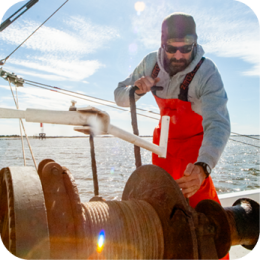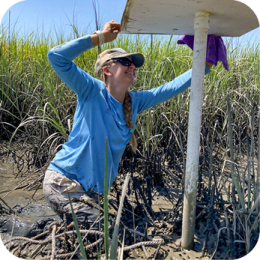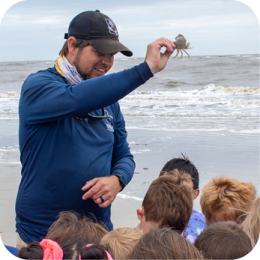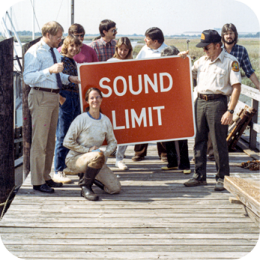
Overview
The Coastal Resources Division of the Georgia Department of Natural Resources is entrusted to manage the state’s marshes, beaches, coastal waters and marine fisheries. The Division’s service area extends from the inland reach of tidal flow to three miles into the Atlantic Ocean. CRD's service area includes Brantley, Bryan, Camden, Charlton, Chatham, Effingham, Glynn, Liberty, Long, McIntosh and Wayne counties.
Primary functions include working with local, state and federal authorities to balance economic development and population growth with protection of the coastal natural, historic and recreational assets. In addition, Coastal Resources provides information to manage Georgia’s diverse coastal fisheries. State, interstate, and federal authorities use this information to provide sustainable commercial and recreation fisheries for the future. The Division aids in the natural resources management of:
- 368,000 acres of salt marsh
- 3,400 miles of tidal shoreline
- 105 miles of sand beaches
- 11 coastal counties
This delicate ecosystem attracts more than $2 billion in tourism-related economic activity annually and is home to a $16 million dockside shrimping, crabbing, and shellfish industry.
Mission
To balance coastal development with protection of the coast's natural assets, socio-cultural heritage, and recreational resources for the benefit of present and future generations.
Vision
To be an agency of knowledge and compassionate professionals who are trusted, respected, and empowered to help the public to be good stewards of Georgia's natural assets and socio-cultural heritage.
Goals
- Enhanced science-based decision making
- Increase Public Awareness through Effective Constituent Interaction
- Recruitment, Retention and Succession Planning
- Improve Aging Infrastructure
- Accessibility to All Georgians
Core Values
- Stewardship of public trust resources as the highest priority
- Respect for and cooperation with external and internal customers
- Representative decision making
- Honesty, integrity, transparency, and accountability in all actions
- Professionalism in all endeavors
- Efficient use of time and fiscal resources
- Intra- and inter-agency teamwork while recognizing State of Georgia sovereignty
- Freedom and flexibility to solve problems creatively
- Commitment to professional growth, learning, and improvement
- Courage to make difficult decisions
- Use of best available science
![]() Download the Coastal Resources Division 2025 Fact Sheet
Download the Coastal Resources Division 2025 Fact Sheet
![]() Download the Coastal Resources Division Strategic Plan 2025-2027
Download the Coastal Resources Division Strategic Plan 2025-2027

The History of the Coastal Resources Division
From managing commercial fisheries in the 1940s to protecting and conserving Georgia's coast today, the Coastal Resources Division has a long and impactful history. CRD's journey began with the appointment of a Tidewater Commissioner in 1924, evolving alongside growing awareness of the coast's ecological importance.
The pivotal Coastal Marshlands Protection Act of 1970, born from the fight against destructive mining, marked a turning point. This act, along with the establishment of CRD in 1978, solidified the state's commitment to coastal conservation.
From implementing sustainable fishing regulations to dealing with hurricanes, habitat protection, and coastal population growth, CRD has achieved significant milestones.
Challenges remain, with legal battles surrounding environmental laws being a constant concern. However, the attitudes of the commercial fishing community have shifted positively, recognizing the value of conservation efforts.
Looking ahead, CRD focuses on promoting appreciation for coastal resources through events and educational programs. A newly developed oyster farming program holds economic potential, while balancing development pressures with conservation remains crucial.
In essence, CRD's dedication has ensured the Georgia coast's continued beauty and ecological health, a legacy to be cherished and protected.







